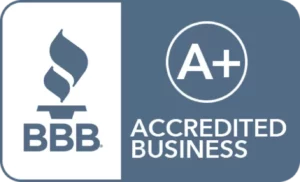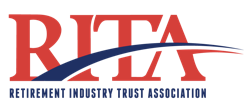The rising cost of health care plans is forcing a number of employees to embrace so-called high deductible health plans (HDHP). An HDHP is a category of health insurance plans available from most providers. They have lower monthly premiums and a higher yearly deductible than regular health insurance plans. The IRS made the Health Savings Account for qualifying taxpayers to receive a tax benefit for medical expenses paid whether you itemize or not. Think of an HSA as a bank account that you can open if you have an HDHP. You can contribute money to this account; the money can be invested so that it grows and compounds over time, tax free. If you need to pay for a qualified medical expense (QME), you can withdraw money from your HSA, also tax free.
Requirements for an HSA
Anyone who has an HDHP can establish a Health Savings Account. Every year, the IRS sets the minimum deductible for your health plan that allows you to open an HSA. For 2023, the annual deductible is as follows:
- Self-only coverage: $1,500
- Family coverage: $3,000
Further, there is a maximum out-of-pocket cost of the plan that it must remain under. Again, for 2023, the maximums are as follows:
- Self-only coverage: $7,500
- Family coverage: $15,000
Additionally, if you have other health care coverage that does not have a high deductible (such as Medicare), you cannot use your HDHP to qualify for an HSA. It is only for those that rely on an HDHP plan only.
Lastly, since health plan options can change in a given year, you can only contribute to an HSA during years you are eligible. If your health plan does not meet the criteria to contribute to an HSA, you may not add funds to the plan. However, all funds will remain in the plan. If, in subsequent years, you enroll in another HDHP, you may resume your contributions into the plan.
HSA Contribution Limits
Along with setting the HDHP thresholds, the IRS also sets a contribution limit to Health Savings Accounts. This is in line with IRAs, 401(k) plans and other retirement plan options. Additionally, the limits are based on what type of coverage you have: self-only or family.
If you are married and at least one spouse has an HDHP family plan, you may both contribute to the family limit. This is true if one spouse has a self-only plan. Please note that you both cannot max out your contributions, which would essentially double the limit. You are limited to the annual limit, no matter who contributes to the plan.
For 2023, if you have self-only coverage, you may contribute up to $3,850. If you have family coverage, the limit doubles to $7,750. Moreover, if you are at least age 55 and are the primary insured, you may contribute an additional $1,000 to the plan. This brings the total limits to $4,850 and $8,750 respectively.
Contributions for the year can be made up until your tax deadline, which is usually April 15 of the following year. For example, you may make 2023 contributions up until April 15, 2024. It’s important to note than any employer contribution(s) count toward the contribution limit. For example, if you have a Health Savings Account through your employer and he or she contributes $1,000 to the plan, this decreases the amount you may contribute for that year.
How Does the Health Savings Account Work?
If you have a 401(k) or IRA, you already know how an HSA works! Funds are contributed to the plan, which can be invested. If your HSA is offered through your workplace, a selection of investment options will be offered to you. Of course, you can also just leave the cash in there. Alternatively, you start an HSA on your own, you may be able to self-direct the plan. IRA Financial offers a Self-Directed HSA option, which allows you to invest in almost anything, including real estate, private businesses and precious metals.
As in other plans, the HSA offers tax benefits. This is the best reason to use an HSA to save for your medical expenses. Here are the three main tax advantages of the Health Savings Account:
- All contributions are tax deductible, lowering your annual tax bill
- All funds in the plan are tax-deferred, meaning you don’t pay taxes until you take distributions from the plan
- Withdrawals to pay for qualified medical expenses are tax free!
Withdrawing from the Plan
As mentioned in the chart above, all withdrawals for qualified medical expenses are tax free. Therefore, you never pay taxes on HSA funds used for these expenses. QMEs include, but are not limited to, prescriptions, surgical expenses, dental work and fertility treatments. Once you reach age 65, changes are made to the withdrawal rules of the Health Savings Account.
At age 65, you may withdraw funds from you HSA for any reason. Medical expenses are still tax free, however all other distributions are taxable at your current rate. However, there is no penalty for withdrawing funds for non-medical reasons. These rules are similar with a traditional 401(k) or IRA. In those plans, you may start taking penalty-free distributions at age 59 1/2, rather than 65.
As with other tax-advantaged plans, there are penalties for withdrawing money too soon. For IRAs and 401(k) plans, you pay a 10% early withdrawal penalty for funds withdrawn prior to age 59 1/2. Penalties for an early HSA are even steeper – 20% for an early withdrawal. This is in addition to the taxes that would be due. Of course, this only applies to non-QME withdrawals.
Related: Why Establish a Health Savings Account?
Setting up a Health Savings Account with IRA Financial
If you have a HDHP and do not have access to a Health Savings Account, look no further than IRA Financial. You can set up a Self-Directed HSA, which allows you the freedom to invest in what you want, when you want. In fact, you have two options: the Custodian Controlled HSA and the Checkbook Control HSA. Each one has its own benefits.
With Checkbook Control, you have the ability to make investments as you see fit. You never have to ask your custodian for permission before investing. This is the perfect option for those who want complete freedom and also have a frequent amount of transactions annually.
On the other hand, a Custodian Controlled HSA is better for those that don’t perform a lot of transactions every year. IRA Financial serves as your custodian, holds the funds and makes the investments on your behalf.
Either way, you win. Self-directing your plan will allow you to invest in alternative assets, such as real estate, instead of a small menu of traditional investments offered by a workplace plan. The more types of assets available to you, the better diversity you will have. Of course, the better investments you make, the more funds you will have available for rising medical costs.











